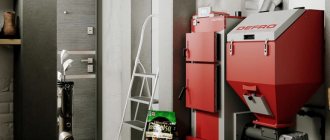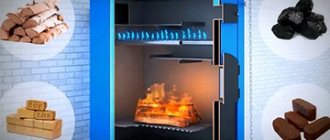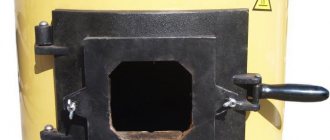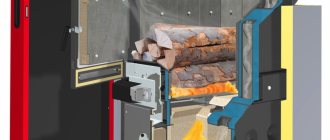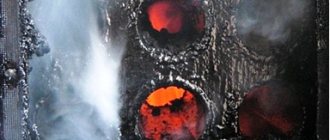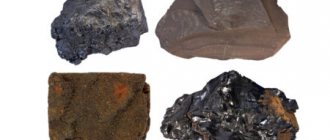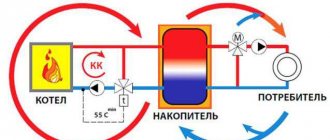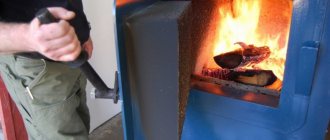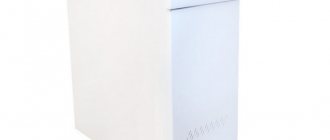How to increase the operating time of a solid fuel boiler
A modern solid fuel boiler is the most effective and inexpensive way to heat a private house, cottage, production workshop or any other facility.
But even a solid fuel boiler room has one drawback - the need to regularly add fuel to the combustion chamber, be it wood, coal, special pellets or wood waste. When deciding to buy a heating boiler, users usually do not think about such a characteristic as the burning time of one fuel fill, and only during operation they look for ways to increase the interval between fuel fills.
There are three ways to increase the time spent on one tab:
- Increasing the volume of the combustion chamber
- Increasing the efficiency of the combustion process
- Increase in calorific value (heat transfer) of fuel
Increasing the volume of the combustion chamber
Not all solid fuel heating boilers allow expanding the combustion chamber, but only a limited number of models that have a sectional design, which allows, if there is a free section and technical capabilities, to expand the combustion chamber. The problem of increasing combustion time in this direction is usually solved in another way: by installing an automatic fuel supply system, which is mounted next to the boiler and supplies fuel as needed. Such systems usually work with special pallets and fuel pellets.
Combustion control
One of the most effective ways to increase the operating time of boiler equipment is to optimize the combustion process: uniform distribution of coolant in the system, regulation of the power of the pyrolysis boiler and the draft force in the chimney. For these purposes, autonomous heating must include elements such as special valves with flow meters, temperature and pressure sensors, pumps, etc.
It is necessary to make a separate adjustment to the chimney system and adjust its draft force, which largely determines how efficiently the solid fuel boiler will operate. It is recommended to do this at the stage of equipment installation, which will save time and money. Before installing the chimney, its height is calculated taking into account the characteristics of the heating system and external factors, such as differences between the boiler temperature and the street temperature, average annual precipitation, wind strength, etc. To regulate the traction force, a traction regulator and a gate are installed.
Increase in fuel calorie content
Any user can increase the fuel burning time by increasing the calorie content of the loaded fuel. To do this, just choose one of the following methods:
- Control fuel moisture: loading dry firewood with a moisture content of 15-20% reduces the energy that a solid fuel boiler spends on drying it, which increases combustion efficiency.
- Using special pallets - compressed briquettes of high density and low humidity - instead of firewood or wood waste.
- The use of high-quality charcoal increases the burning time by 2-3 times compared to firewood. At the same time, there is virtually no smoke and the formation of ash is reduced.
| Wood boiler. Heat exchanger design. |
| Views: 57841 Comments: 179 |
A solid fuel boiler is not just a firebox and a pipe. The heat generated in the firebox must still be properly managed. You can send all this heat straight into the chimney and thus contribute to the overall warming of the planet’s climate. What is right for us is to use as much heat as possible to heat the home, and to give into the chimney exactly as much heat as is required to create acceptable draft, no more.
It hardly makes sense to give any figures reflecting, say, the heat capacity of the boiler walls, heat transfer as a whole, etc. and so on. These numbers will not give anything, because today we do not conduct scientific experiments with a separate boiler, with a specific stove. It is important for us to gain an understanding of HOW to do so in order to achieve the stated goal.
To do this, let’s figure out what’s happening in the boiler and how these processes need to be influenced. We figured out the firebox and generated heat. True, a considerable part of the generated heat is used directly in the firebox to heat its walls, the catalyst (if there is one), as well as the bottom and roof.
Once again, a small digression: the fact that part of the heat is used for these purposes cannot be disputed. But here’s what’s interesting: the walls of the firebox are heated by the so-called radiant heat from the flame. Heated gases here practically do not take part in heat transfer; they go up and further.
And the more the walls of the firebox warm up, the less radiant heat is consumed to warm them up. The walls no longer only perceive and “absorb” heat, but also reflect back when heated. And this heat is now used to further increase the temperature in the firebox, which is a favorable factor for the complete combustion of fuel.
As for those fireboxes that have a built-in heat exchanger in the form of a steel jacket with water, then all the radiant energy from the flame is used to heat the water. As a result, the steel jacket never gets hotter than the water temperature because the water is constantly changing. The consequences of this are already clear: high temperatures in the furnace are unattainable.
But the brick walls of the firebox are a completely different story. The brick heats up quickly and reaches high temperatures, much higher than water can heat up. Those temperatures that are so necessary for complete combustion of fuel.
Let's return to our question: how to manage the heat generated in the firebox and entering the furnace channels? There are a certain number of solutions on how to organize these channels, how to organize heat exchange. But we are talking about a boiler, and it is important for us to transfer heat to the heat exchanger. Therefore, we build a bell where we place the heat exchanger.
Here it is necessary to create conditions under which heat exchange would be as efficient as possible. And the first thing to do is to increase the volume of the cap. The gases carrying heat from the firebox are in motion. If you make the cap very small, no larger than the cross-section of the chimney, then the speed of gas movement will be maximum.
What is the real efficiency of solid fuel boilers
Manufacturers of heating equipment, in particular solid fuel boilers, offer a wide range of products with different characteristics.
Based on the design of the solid fuel boiler, all products can be divided into the following groups:
- traditional heating units;
- wood boilers with pyrolysis type of combustion (gas generator);
- long burning;
- pellet
A traditional solid fuel boiler, including a homemade one, in appearance resembles a stove or potbelly stove with the most necessary elements - a combustion chamber, a door, an ash pan and a chimney. Using the ash pan, you can regulate the draft by opening and closing the damper. Such designs are considered quite reliable because they do not contain any technological elements, such as temperature sensors or thermometers, an automatic control unit or electronics. In this case, the main design element of a solid fuel boiler is a heat exchanger that transfers thermal energy to the coolant. The heat exchanger can be tubular or made in the form of a container made of solid steel sheets.
There are, however, more complex devices that can also be classified as traditional. They are equipped with baffles and throttle valves to make it easier to regulate the draft, and the hot air travels a greater distance before exiting the chimney. Such partitions significantly increase the efficiency of the boiler, since more thermal energy is transferred to the coolant, and does not just “fly out into the chimney”. You need to understand that boiler efficiency is a very important indicator.
For such boilers, you can use almost any fuel - wood, coal, pellets and even garbage. The main thing is that it is as dry as possible. In terms of performance, boilers of simple designs can hardly claim 50% efficiency, and in most cases it is only 15-20%. The problem is that the fuel burns too quickly, without having time to transfer all the thermal energy to the water in the heat exchanger. As a result, more heat is simply released into the chimney or its excess causes the coolant to boil. For example, firewood needs to be added to the firebox every hour, and coal will last for 2-4 hours, but it still burns with excess energy and large heat losses.
Modern boilers with baffles and throttle valves are more economical and productive. In them, the combustion temperature of the fuel can be adjusted, and one load of fuel lasts for 8-12 hours. Therefore, the efficiency of such installations often reaches 80%.
Cost of equipment
The solid fuel boiler, along with a pellet burner and a buffer tank, cost Konstantin about 3,000 thousand dollars.
At the moment, the choice of pellet devices on the Belarusian market is huge. Various manufacturers are represented in any price category. The same applies to automation, burners, heat accumulators and other devices. The final price depends on specific needs and wishes.
The cost of the entire heating system, including turnkey installation, was 11 thousand dollars.
Naturally, the price is not at all small, but now the dacha is a full-fledged suburban home that can be used all year round. The material was taken from the Tut.by portal, you can read the full article.
Long burning fuel units
The idea of creating long-burning solid fuel boilers with your own hands will certainly seem attractive to many. The beauty of such structures is that you only need to put firewood in them a couple of times a day. A long-burning boiler differs from a traditional unit in that combustion in it begins from the top of the fuel stack. In this case, air is also supplied to the fuel chamber from above.
The design of a long-burning solid fuel boiler assumes the presence of a water circuit around its body, so the water in it is heated efficiently at any stage of the process. Since when the boiler is operating, it is not the entire filling that burns at once, but only the top layer of fuel, it lasts for almost 30 hours. A number of universal solid fuel boilers when using coal can operate for up to 7 days on one fill.
This design is not structurally complex and does not have any precision instruments that need to be connected to electricity. Therefore, their price is quite acceptable for the consumer. In addition, it is quite possible for a home craftsman to assemble a solid fuel boiler using ready-made drawings with his own hands. You can make a heating boiler with your own hands and save a lot of money.
Here are a few disadvantages of these designs. Fuel cannot be added to a boiler that is running. Firewood for the boiler must be well dried (no more than 20% humidity) and cut into small logs. Coal can only be used of high quality, with a low slag content. In addition, units of this type are limited in power - as a rule, no more than 40 kW.
Another type of solid fuel boiler is pellet units. Their difference is that wood waste pellets are used as fuel. Most industrial models have a special hopper from which granules are automatically fed into the firebox.
Cast iron and steel structures - what are the differences?
Whatever material the boiler is made of, it is very important that it meets the basic operational characteristics. Let's look at them in more detail.
First of all, you should pay attention to the material of the heat exchanger - cast iron or steel. If you want to use a ready-made solid fuel boiler design, it’s unlikely that you’ll be able to make a cast iron heat exchanger yourself. Such work requires both special equipment and special knowledge and skills. Therefore, you can purchase ready-made sectional structures, which are disassembled before transportation and reassembled on site.
Cast iron heat exchangers tend to become covered with dry rust - a special film that protects the walls of the unit from destruction. In addition, wet rust also forms much more slowly, which is due to the long service life of cast iron products - from 10 to 25 years. Other advantages of cast iron heat exchangers include the absence of the need for frequent and complex maintenance. Cleaning of such devices is rarely required, and carbon deposits practically do not reduce the efficiency of the boiler. If it is necessary to repair or increase the power of the unit, you only need to replace the defective sections or increase their number.
The disadvantages of cast iron products are:
- the large mass of the boiler requires a separate foundation;
- difficulties in the assembly process and high transportation costs;
- sensitivity to thermal shock - cast iron does not like temperature changes, so contact of a hot surface with cold firewood or cold water can be detrimental to it;
- high thermal inertia - it takes a long time to warm up the boiler, but its subsequent cooling occurs slowly.
As for steel products, they are less sensitive to temperature changes and are not afraid of contact with cold objects. This property allows, when assembling solid fuel heating boilers according to drawings, to equip them with sensitive automatic elements. And thanks to their low inertia, such units quickly warm up and cool down - this allows you to regulate the air temperature in the house. At the same time, you can make a drawing of a long-burning solid fuel boiler with your own hands, which will allow you to take into account all the nuances.
Assembling a boiler according to a finished project
The easiest way would be to build a solid fuel boiler out of brick with your own hands. Its design is popular and does not require complex calculations. Such a boiler can be used for several purposes at once, which is why they are installed mainly in kitchens. It is noteworthy that even beginners can assemble such a unit on their own.
In the process of work, you will need a grinder, a welding machine with electrodes, sheet steel, brick, materials for stove mortar, pipes and metal corners. For those who have never held welding in their hands, it is best to cut the parts according to the drawing of a solid fuel boiler, and entrust the welding work to a professional. This is important, since the quality of the seams directly affects the durability of the boiler.
The positive aspect of independent construction of heating equipment is that you can select the size of the solid fuel boiler and firebox, as well as calculate its power for specific needs. In addition, it can be equipped with a hob or brick vault so that heat is accumulated during the combustion of wood and then redistributed to the heating system.
The heat exchanger is most often made rectangular, using a rectangular profile and pipes with a cross-section of 40-50 mm. Thanks to the profiles, the joining of pipes is easier, and the seams are more durable.
Switching from wood heating to pellets
During communication with the owner of the house, it became known that the modernization of the heating system was implemented back in November 2019. Previously, the building had only stove heating, but taking into account the more regular appearance of all family members at the dacha, they began to think about creating a water heating system.
Gas equipment was not considered, since the pipeline only passed through the neighboring village. An electric boiler is an expensive type of heating, so the choice fell on a solid fuel unit from the Polish manufacturer Drew-Met.
The main source of fuel is firewood, but it is possible to switch to pellet granules. Thus, a PellasX pellet burner, the necessary automation for it and a pellet storage bin were purchased for the boiler.
Burners of different brands have a similar structure. The main elements are a firebox, an auger for feeding pellet granules, an igniter and a fan. The operation of such equipment involves regular cleaning of the heat exchanger and ash pan, as well as maintenance of the device itself.
Step-by-step instructions for building a solid fuel boiler
So, the whole process of how to make a boiler with your own hands according to the drawings can be divided into several successive stages:
- Using a grinder, you need to cut blanks from pipes and profiles. The profiles will be racks; you need to cut round holes in them with a gas cutter for joining with the pipes. You will need to make 4 holes along the Ø50 mm pipe in the front pillars and the same number in the rear ones. In addition, we also need holes for inserting into the heating system. Sagging and deposits as a result of cutting or welding must be cleaned with a grinder so that they do not interfere with the movement of water through the pipes.
- Next, the blanks are assembled into a single structure. Two people will have to work - the welder will need an assistant to hold the tubes in a stationary position. To make it more convenient, you can place the racks with pipes on a flat surface and weld the front and back parts of the boiler.
- Now you need to ensure the supply and drainage of water from the boiler. The incoming and return pipes are welded to the finished frame, and the ends of the rectangular profiles are welded with pieces of metal 60x40 mm.
- Before installing the heat exchanger, it is checked for leaks. To do this, install it vertically, close the bottom hole and fill it with water. If there are no leaks at the seams, then you can continue working.
- The boiler body is built from brick and a heat exchanger is built into it, leaving a gap of at least 1 cm between them. The register must be installed in such a way as to create a rise towards the exiting hot water. The level difference between the outlet and the front right upper corner of the heat exchanger must be at least 1 cm. This will improve coolant circulation and eliminate air pockets.
- The brickwork should overlap the heat exchanger from above by 3-4 cm. A cast-iron slab is laid on top of the masonry. The chimney is installed at the discretion of the owners - brick, metal, or led into a ready-made pipe.
How to increase boiler performance
A self-assembled solid fuel boiler, as a rule, is characterized by significant heat losses associated with the loss of heat into the chimney. Moreover, the straighter and higher the chimney, the more heat is lost. The way out in this case would be to create a so-called heating panel, that is, a curved chimney that allows more thermal energy to be transferred to the brickwork. The brick, in turn, will give off heat to the air in the room, heating it. Often such passages are arranged in the walls between rooms. However, this approach is only feasible if the boiler is located in the basement or on the ground floor, or if a bulky multi-stage chimney is built.
Alternatively, you can increase the efficiency of the boiler by installing a water heater around the chimney. In this case, the heat of the flue gases will heat the walls of the chimney and be transferred to the water. For these purposes, the chimney can be made from a thinner pipe, which is built into a pipe of a larger cross-section.
The most effective way to increase the efficiency of a solid fuel boiler is to install a circulation pump that forcibly pumps water. This will increase the productivity of the installation by approximately 20-30%.
Of course, the boiler must be designed so that the coolant can circulate independently if the electricity in the house is turned off. And if it is available, the pump will speed up the heating of the house to comfortable temperatures.
| Stubborn |
Safety precautions
Any work related to the installation, modernization, or repair of gas equipment is associated with increased risk. The best option for converting a boiler for liquefied gas is to entrust it to a representative of a specialized company. This will guarantee further safe operation.
Primary requirements:
- Work must be carried out in accordance with the manufacturer's instructions and safety regulations.
- Installation of gas cylinders in the immediate vicinity of boiler equipment and heating appliances is not allowed. Overheating causes an explosion.
- The room is equipped with a supply and exhaust ventilation system. An additional hood is mounted 30 cm from the floor.
- To prevent explosive accumulations of mixtures, a gas analyzer is installed in the boiler room. It is better if it is connected to an automatic protection system that shuts off the fuel supply.
- When replacing jets, manifolds, and other elements of the gas supply system, be sure to check the tightness of all connections. To do this, use soap foam. Open flame testing is prohibited.
By remaking the boiler yourself, you take full responsibility for the final result.
